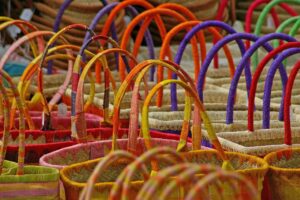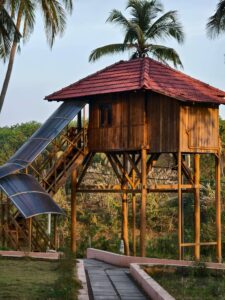Bamboo has been an integral part of human civilization for centuries, influencing cultures across Asia, Africa, South America, and beyond. This versatile plant is not only used for construction, tools, and food but also plays a significant role in cultural rituals, festivals, music, and religious ceremonies. From spiritual beliefs to traditional celebrations, bamboo is deeply embedded in the customs of many indigenous and ancient societies. This article explores the diverse cultural practices involving bamboo across the world, highlighting its profound impact on human heritage.
1. Bamboo in Asian Cultures
China: A Symbol of Strength and Integrity
Bamboo has been revered in China for thousands of years, symbolizing resilience, flexibility, and moral integrity.
- Calligraphy and Painting: Chinese scholars often depict bamboo in ink paintings, emphasizing its ability to bend without breaking—a metaphor for strength in adversity.
- Confucian Philosophy: Bamboo represents a gentleman’s virtues—upright, humble, and resilient.
- Feng Shui and Lucky Bamboo: In modern Chinese culture, lucky bamboo plants are believed to bring prosperity, happiness, and health.
- Bamboo in Martial Arts: The use of bamboo weapons, such as the “bamboo sword” in Kung Fu and Kendo, showcases its practical and spiritual significance.
Japan: Bamboo in Shinto and Zen Buddhism
- Shinto Shrines: Bamboo is often used in purification rituals, fences, and talismans to ward off evil spirits.
- Zen Gardens: Bamboo groves symbolize harmony and enlightenment in Japanese temple landscapes.
- Tanabata Festival: During this annual celebration, people write wishes on colorful paper strips and hang them on bamboo branches.
- Tea Ceremonies: Traditional Japanese tea whisks, ladles, and other utensils are made from bamboo, reflecting its importance in cultural rituals.
India: Bamboo in Mythology and Traditional Practices
- Sacred in Hinduism: Bamboo is associated with Lord Krishna, who is often depicted playing a bamboo flute (bansuri), symbolizing divine music and spiritual connection.
- Bamboo Weddings: Some tribal communities in Northeast India, such as the Khasi and Garo tribes, use bamboo poles in wedding rituals to bless newlyweds with strength and longevity.
- Religious Festivals: Bamboo is used in Hindu festivals such as Durga Puja, where it forms part of the decorative structures of temporary temples (pandals).
The Philippines & Indonesia: Bamboo as a Spiritual and Social Element
- Creation Myths: Filipino folklore tells the story of Malakas and Maganda, the first humans, who emerged from a split bamboo stalk.
- Bamboo Dance (Tinikling): This traditional Filipino dance mimics the movements of birds avoiding bamboo traps.
- Indonesian Shadow Puppets (Wayang Kulit): Bamboo frames are used in the intricate puppetry that tells Hindu epics like the Ramayana.
- Bamboo Houses: In both the Philippines and Indonesia, traditional homes are built using bamboo, demonstrating its role in everyday life and sustainability.
2. Bamboo in African Traditions
Bamboo is widely used by indigenous African communities for spiritual and practical purposes.
- Rituals and Ancestral Worship: Some African tribes use bamboo poles to mark sacred sites and graves.
- Traditional Healing Practices: Herbalists use bamboo extracts for medicinal treatments, including wound healing and anti-inflammatory remedies.
- Bamboo Drums and Instruments: In countries like Ghana and Nigeria, bamboo is used to create drums and percussion instruments for tribal dances and storytelling.
3. Bamboo in South American Indigenous Cultures
Amazon Rainforest Tribes
- Spiritual Practices: Shamans use bamboo in ceremonial rituals, such as Ayahuasca ceremonies, where it is believed to enhance spiritual journeys.
- Weaponry and Tools: Indigenous communities craft blowguns and arrows from bamboo for hunting.
- Housing and Boats: Bamboo structures are commonly found in Amazonian villages, providing lightweight yet durable shelter.
Andean Cultures
- Bamboo Flutes (Quena and Zampona): These traditional instruments are integral to Andean music and cultural heritage.
- Festivals and Rituals: In Peru and Bolivia, bamboo is used to create effigies and decorations for local festivals.
4. Bamboo in Polynesian and Oceanic Traditions
Bamboo is a vital resource in Pacific Island cultures, shaping their lifestyle and traditions.
- Navigation and Canoe Building: Indigenous Polynesians use bamboo in outrigger canoes and sailing rigs, ensuring sustainable maritime travel.
- Tattooing Tools: Some Pacific tribes craft tattooing needles from bamboo, linking them to ancestral body art traditions.
- Storytelling and Music: Bamboo rattles, flutes, and drums are common in traditional Polynesian performances.
5. Bamboo in Modern Cultural Celebrations
Even in contemporary times, bamboo continues to play a crucial role in cultural festivals and global traditions.
- Lantern Festivals (China and Taiwan): Bamboo frames are used in sky lanterns released during these festivals.
- Diwali (India): Bamboo lamps and structures are used in Hindu festival decorations.
- Caribbean Bamboo Bands: In Trinidad and Tobago, bamboo percussion instruments are an essential part of folk music.
- Environmental Movements: Across the world, bamboo is celebrated as an eco-friendly alternative to deforestation, symbolizing sustainability and conservation efforts.








